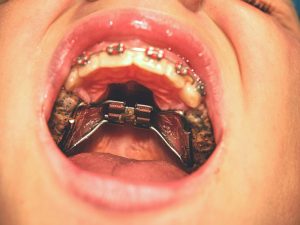 The orthodontic expander is one of the most common orthodontic devices used in children and preteens. The contraption spreads over the roof of the mouth and attaches to the patient’s teeth with metal arms. Children and parents are often scared when they first see the contraption.
The orthodontic expander is one of the most common orthodontic devices used in children and preteens. The contraption spreads over the roof of the mouth and attaches to the patient’s teeth with metal arms. Children and parents are often scared when they first see the contraption.
If your child’s orthodontist has recommended a palate expander for your child, you probably have a lot of questions. Is it painful? How does it work?
Let’s take a quick look.
What is an orthodontic expander?
A palatal expander stretches the upper jaw by widening the palate or the roof of the mouth. Orthodontists recommend them for patients who have a crossbite or who don’t have enough space for their permanent teeth to grow.
The palate can only expand if the bone sutures on the roof of the mouth are not yet fused or calcified. The midpalatal suture fuses between the ages of 14 and 16. This is why arch expansion using a palatal expander is most effective with children and preteens.
Palate expanders are custom-made for each patient. The orthodontist bonds or cements them to the upper molar teeth. A screw connects the two sides of the expander. Patients (or their parents) have to turn the screw with a special key every day.
Over time, the pressure created by the palate expander causes the two palatal bones to move apart. This corrects the crossbite or eliminates crowding so that permanent teeth can erupt.
What to expect?
- Your child may feel pain in the nose or below the eyes after turning the screw.
- In the first few days after the palatal expander is installed, your child may have trouble speaking.
- Some children lisp or drool as they get used to having the expander in their mouth.
- As the palate expands, a gap may form between the two front teeth. This will be fixed with braces in the next step of the treatment.

